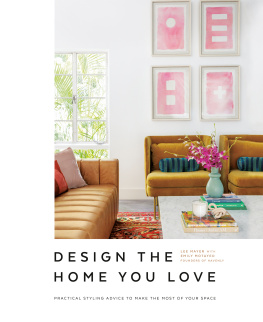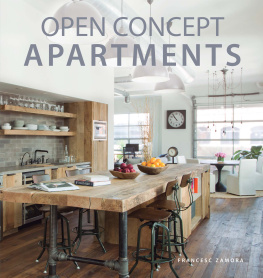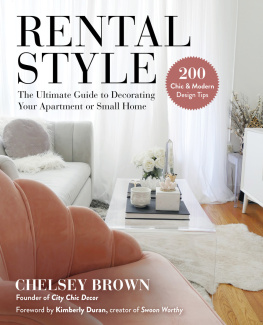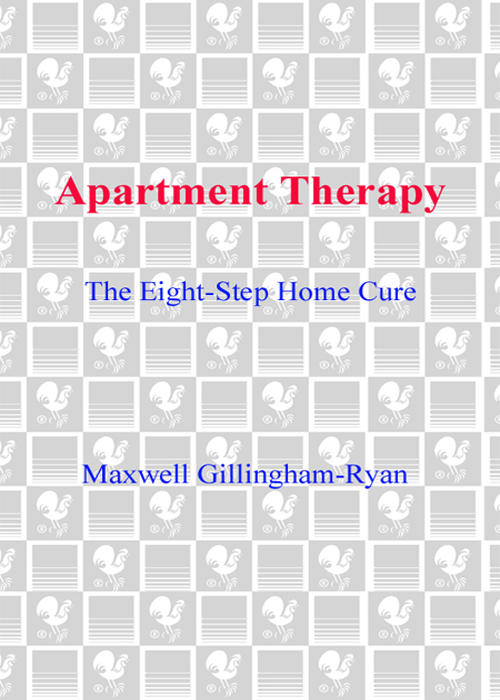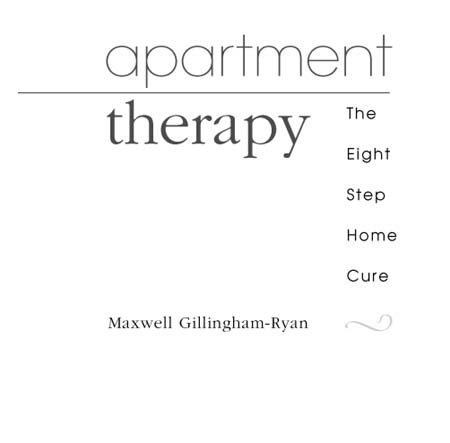Sara Kate, my wife, who helped me declutter my writing countless times and continues to inspire me with new ways of creating a healthy home.
My mother and father, who gave me my first home, filled with art and dinner parties, and to my stepmother, who taught my father and the rest of us how to keep it clean.
My brother, for sharing rooms since we were little and for seeing that Apartment Therapy would be a great blog.
Emily Payne, for bringing the words to life with simple, beautiful illustrations.
Jasie, for your careful, thoughtful reading of a very long manuscript and all your great ideas for shortening it.
Eric and Thea, for offering your home for our winter writers' retreat, and allowing me to take up the entire dining room.
Philip Rappaport, the most enthusiastic editor an amateur writer could ever wish to have, for giving the book a home.
Wendy Silbert, my most diligent agent, who believed in this book from the very beginning, taught me how to write a book proposal, and ensured that it became a reality.
All of my clients and students, for allowing me to visit the most personal of spaces, your home. It is because of you and for you that this book is written.
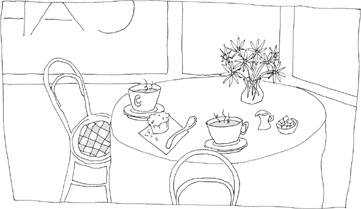
Introduction

In the caf next door to my apartment where I often have breakfast, I met Myles, a film editor who lives a few blocks away. When I told him that I was an interior designer and an apartment therapist who worked with regular people in regular apartments, our casual conversation quickly changed. He wanted to tell me about his apartment and see what I thought.
Would you mind? he asked.
Not at all, I said. What's the problem?
Within minutes, with very little prompting, I was deep into a story about Myles's breakup with his girlfriend and how she had recently moved out, leaving him with a very nice apartment that he hated. The memories were so painful that he couldn't sleep in his bedroom and was considering moving.
Myles had an intuitive understanding that his personal troubles were somehow linked to the space he lived in. He knew that he had to change his home in order to feel better. He wanted help.
We talked more, and I asked him if he had done anything at all with his apartment to make it better. He had. He had moved his bed out into the living room and added some color to the walls. The apartment had been a drab white box before, he said. I congratulated him on the color and suggested he take this further, but told him that he should move his bed back into the bedroom. He balked at this idea.
Myles was feeling blocked by his recent breakup and wanted to regain confidence and movement in his own life. Adding color would do this, but settling into a defensive position in the living room would not. I told him that he needed to reclaim his bedroom. I also told him there were three basic things that he could do to move back into the bedroom: perform a deep cleaning, remove any of her personal effects or decorations, and add new color and more light to the room. If that didn't work, I would be happy to visit and see what more could be done.
It worked.
Over the next few weeks we met now and then for coffee, and I would consult as Myles filled me in on the progress he was making at home. His enthusiasm for the project was noticeable and in stark contrast to the depression I had noticed when I first encountered him. Physically moving furniture was creating movement in his life. In the end, Myles transformed his bedroom and reestablished himself in a home that was now his, not his and hers. Ironically, but not surprisingly, a few months later he received a big editing job in Los Angeles and had to sublet his apartment for the summer. When you get your house in order, other parts of your life just start to follow.
There is a great deal of pain surrounding our relationship with our home. In the past five years, I have met many people like Myles who have shared their private struggles with me in order to find a solution. Especially in the city, where apartment living is the norm and people pay so much for so little, they often come to identify their apartments as second skins, the center of lives they either love or hate.
Despite the fact that our homes are our only refuge, the only place that we can call our own, most of us are unhappy with the places we live in. Even more do not recognize the strong effect they have on our daily lives. Not sleeping well, not cooking at home, being ashamed to have people over, and being stressed out by repairs are all complaints I hear often. When these issues grow or linger, they come to affect our personal lives and careers. Ducking the problems and moving to another apartment is an extreme and often typical solution, but the first things that follow us when we move are our own bad habits and, as they say, our baggage.
This book is about how a home works and what makes it healthy. It goes far beyond surface-oriented decorating instructions and makeover ideas. It is an eight-week program that guides you through the process of turning your home into a beautiful, well-organized, and inspiring environment. The program enables you to form and maintain good home habits. By the end of your apartment cure you will want to invite others in to share the pleasure of your home.
Interior Design
This book is the fruit of my experience in two unlikely fields. While rearranging rooms and designing space has always been a passion, my first job was for an interior design company, but it almost ruined my love for design forever.
A week after my college graduation, I went to work for a reputable interior design firm in New York City. Every day I was part of a team that designed wallpaper, sheets, lamps, rugs, and chairs. At first, I found working in a place surrounded by talented and experienced designers inspiring, but soon I began to feel that the projects I was working on were missing something. Although we paid great attention to the patterns and colors of our designs as we busily sketched them out on paper, we thought very little about what happened once our designs were manufactured, sold, and actually used. The market for all these products was faceless, and our production seemed to me more of a game than an answer to a problem. There was an emptiness to what I was doing.
That August, I was invited to my boss's house in the Hamptons for a dinner party. His house was beautiful and glowing with candles, some floating in the pool beside our dinner table. It was obvious that a lot of work and money had gone into the evening, from the numerous changes of dinnerware to the orchids that dotted the room. But while the space was impressive, the gathering lacked warmth and interaction. I felt awkward, and I met other people who felt the same way I did. My boss was remarkable at making things look good, but he was not aware of what it took to make guests feel good, and that environment wasn't helping. Impressive does not always equal comfortable.


